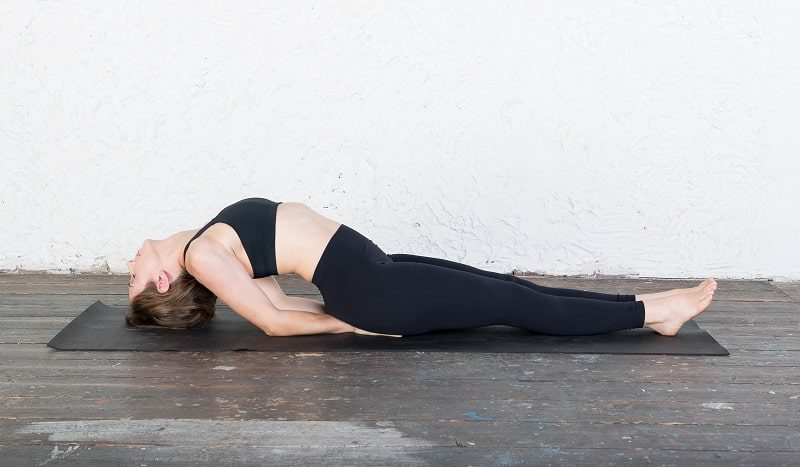Exploring the Benefits and How to Do Matsyasana, the Fish Pose in Yoga

Matsyasana, also known as Fish Pose, is a yoga posture that has been practiced for centuries. It is considered one of the most important asanas in the ancient Indian practice of yoga. The name “Matsyasana” comes from the Sanskrit word “Matsya,” which means fish, and “asana,” which means posture or seat. In this pose, the body is arched backward and lifted off the ground, resembling the graceful curve of a fish.
Matsyasana is not only a physically stimulating posture, but it also has a deep spiritual significance. According to Hindu mythology, Matsya was an avatar of Lord Vishnu, the preserver of the universe, who appeared in the form of a fish to save the world from a great flood. Matsyasana is said to represent the victory of good over evil and the triumph of light over darkness.
In the next section, we will explore the many benefits of practicing Matsyasana.
I. Benefits of Matsyasana
Matsyasana offers a variety of physical and mental benefits that make it a valuable addition to any yoga practice. Here are some of the benefits of practicing Matsyasana:
Improved posture and flexibility: Matsyasana helps to stretch the muscles of the chest, neck, and shoulders, which can help to improve posture and increase flexibility. And this can be especially beneficial for those who spend a lot of time sitting at a desk or hunched over a computer.
Relief from respiratory issues:
Matsyasana has been known to provide relief from respiratory issues such as asthma, bronchitis, and sinusitis. The pose helps to open up the chest and increase lung capacity, allowing for deeper and easier breathing.
During Matsyasana, as the chest and ribcage expand, it helps to increase the space for the lungs to take in more air. The gentle stretching of the neck and throat also helps to clear the sinuses and relieve congestion.
In addition to physical benefits, the deep breathing that comes with Matsyasana can also help to calm the mind and reduce stress and anxiety. This can further aid in easing respiratory issues that are often triggered by stress and anxiety.
Relief from stress and anxiety: The gentle stretching and relaxation of Matsyasana can help to calm the mind and relieve stress and anxiety. It is also believed to stimulate the release of endorphins, which can help to improve mood and reduce feelings of depression.
Stimulation of the thyroid gland: Matsyasana stimulates the thyroid gland, which can help to regulate metabolism and balance hormones.
In the next section, we will explore how to do Matsyasana, step-by-step.
II. How to do Matsyasana
Matsyasana can be practiced by yogis of all levels, from beginners to advanced practitioners. Here are the step-by-step instructions for performing Matsyasana:
- Lie flat on your back with your legs together and your arms by your sides, palms facing down.
- Bend your knees and bring your feet close to your hips, with your heels touching the ground.
- Press your elbows and forearms into the ground, and lift your chest up towards the ceiling.
- Tilt your head back and lower the top of your head to the ground. Your weight should be supported by your forearms and the crown of your head.
- Now hold the pose for 30 seconds to 1 minute, breathing deeply and relaxing into the stretch.
- To release the pose, gently lift your head and slowly lower your back and head to the ground.
Modifications and variations:
- If you have difficulty lowering your head to the ground, you can use a block or cushion to support your head and neck.
- For a deeper stretch, you can straighten your legs and point your toes, lifting them off the ground.
Precautions and contraindications:
- Avoid practicing Matsyasana if you have a neck injury or any other medical condition that affects the neck or spine.
- If you have any discomfort or pain while practicing Matsyasana, come out of the pose immediately.
In the next section, we will explore how to prepare for Matsyasana with warm-up exercises and recommended yoga sequences.
And if you also want to learn different types of yoga asanas, then you should join a 300 hour yoga teacher training in Rishikesh.
III. Preparing for Matsyasana
Before practicing Matsyasana, it’s important to prepare your body with some warm-up exercises and to follow a recommended yoga sequence. Here are some tips for preparing for Matsyasana:
Warm-up exercises:
- Practice some gentle neck stretches and shoulder rolls to loosen up your upper body.
- Do some seated forward folds or other gentle stretches to warm up your lower back?
Recommended yoga sequence:
- Matsyasana is typically practiced towards the end of a yoga sequence after you have warmed up your body with other postures such as Downward-Facing Dog, Cobra Pose, and Bridge Pose.
- It can also be practiced as part of a series of backbends, such as Camel Pose and Bow Pose.
Tips for beginners:
- If you are new to yoga, it’s important to start slowly and listen to your body.
- Work with a qualified yoga teacher who can guide you through the proper alignment and modifications for Matsyasana and other postures.
- Practice regularly to build strength and flexibility in your back and neck muscles.
IV. Conclusion
Matsyasana, or Fish Pose, is a powerful yoga posture with a rich history and many physical and mental benefits. By practicing Matsyasana regularly, you can improve your posture, increase your flexibility, and relieve stress and anxiety. Remember to warm up your body with gentle stretches before practicing Matsyasana, and to work with a qualified yoga teacher if you are new to the practice. With dedication and practice, you can harness the power of Matsyasana and experience the many benefits for yourself.
In conclusion, Matsyasana is a simple yet powerful yoga posture that offers numerous benefits for both the body and mind. Whether you are a beginner or an advanced practitioner, incorporating Matsyasana into your yoga practice can help you improve your posture, increase your flexibility, and reduce stress and anxiety.
It’s important to remember that practicing yoga is a journey, and it’s okay to take things at your own pace. Be patient with yourself and your body, and listen to your own needs and limitations. Always work with a qualified yoga teacher who can guide you through the proper alignment and modifications for Matsyasana and other postures.
With regular practice, you will gradually build strength and flexibility in your back and neck muscles, and you will begin to experience the many benefits of Matsyasana. So, take a deep breath, relax, and let Matsyasana help you dive deeper into your yoga practice.



